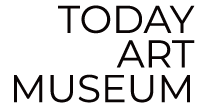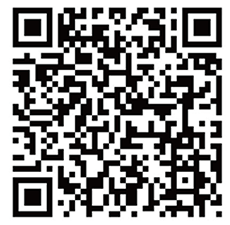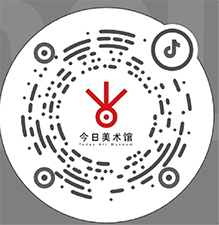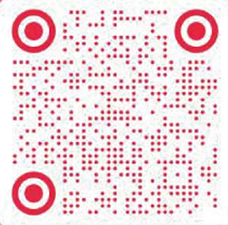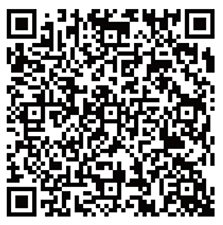Before we embark upon an analysis of Su Xiewei’s work, I first wanted to quickly describe the history of abstract art, because the history of abstract art in China has been deeply misunderstood. In the 1980s, abstract art was simply linked to the social reform movement in China, so it was given excessive political and sociological meaning. At the same time, the Chinese understanding of abstract painting was often confused with traditional Chinese imagery. As a result, the Chinese have not thoroughly explored the principles and logic of abstract art. Since the rise of conceptual art in the 1990s, abstract art has been considered an outdated branch of modern art. As a result, the theory and study of abstraction in China has been deeply misread and misunderstood.
We should do this simple description because Su Xiewei is a conscientious artist. After studying the history of abstract art, it would seem that his works represent the collision of traditional Chinese culture and the history of abstract art.
The introduction of relativism in the world and the universe in modern Western physics serves as the backdrop for the formation of abstract art. On a philosophical level, I reinterpret this based on the system of principles extant in the world today.
After philosophy was transformed into language, we know that primitive and classical philosophical systems were tailored to the single-point perspective method of observation as a way of explaining the structural stability of the world. These systems were not laws of the universe; they were simply linguistic methods for explaining the external world. Structures of world stability previously founded on classical philosophy collapsed as we challenged and questioned the three-dimensional space upon which we had previously relied.
On the foundation of Sigmund Freud’s theories of psychoanalysis, humanism was the next turn in philosophy after Friedrich Wilhelm Nietzsche and Henri Bergson. Humanism elevated human consciousness and will to the position of a principle of the world.
With this as theoretical background, Impressionism proposed a separation between the visual and material properties of an object. Visual meaning was no longer meant to explain these objects; the objects had their own value and logic. With the separation of signifier and signified, vision itself became an unprecedented artistic theme. Based on this logic, Impressionism soon gave rise to Fauvism and Expressionism. Together, these movements revealed the rationality of intuitive and humanistic theories in the practice of visual art.
The emergence of Paul Cézanne is an isolated example; art historically, his categorization as part of late Impressionism is inaccurate. Strictly speaking, he is outside of Impressionism. After understanding the external appearances of forms in three-dimensional space based on single-point perspective, Cézanne used simple geometric forms as a way of summarizing the complex structures of all things in the universe. Cézanne is important because he provided a foundation for countless possibilities. His methods of summarizing geometric space and the resulting conception the planar nature of space directly inspired the later Cubist movement. In Analytical Cubism, the structure of the world was interpreted as a series of planes arranged in time. In the transformation from Analytical Cubism to Synthetic Cubism, some of the artists who had engaged with Cubist practices did not continue with the material experiments of Synthetic Cubism. Inspired by Fauvism and Expressionism, Robert Delaunay, Frantisek Kupka, and Wassily Kandinsky produced Abstract Expressionism from a range of different perspectives. However, a common trait linked these three men together. While they separated abstract painting in visual art from literary narrative, they married them with the pure emotional sounds of sound art Thus, synesthesia was discovered within the framework of intuition. Synesthetic figures describe objective events, but they also blend, intersect, and transpose the human senses of hearing, vision, smell, taste, and touch. This logic later inspired American Abstract Expressionism and Action Painting, as well as French Tachisme. Tachisme painting is akin to American action painting. Artists from both movements emphasized the spontaneous use of the unconscious by forsaking the formal structures of Cubism and directly applying intuitive and random emotions in their work. This trend was best represented by Jean Dubuffet. Before him, there was also Willem De Kooning, Robert Motherwell, and Jackson Pollock.
Another thread was Kazimir Severinovich Malevich who, like Kandinsky, was from Russia. Malevich proposed the artistic theory of Suprematism. He and Dutch artist Piet Cornelies Mondrian inspired the later Post-Painterly Abstraction movement in the United States. In this movement, the perceptual aspects of painting became conceptual. Later Hard-Edge Art was obviously influenced by these painting aesthetics. These flat, clean blocks of color no longer represented painting styles and techniques built on the differences between individuals. The materiality of the colors became the best symbol for the industrial aesthetic of this time. This concept led to the later emergence of conceptual abstract painting, but it also broke the historical tradition of experiences of the handmade.
Strictly speaking, Mark Rothko’s completely abstract color-blocked painting style was inspired by Surrealism, but his work can be seen as a part of the Post-Painterly Abstraction movement. In Rothko’s work, ancient Greek tragedy becomes a vehicle through which the spiritual expression of historical experience is conveyed. From the Greek tradition, he drew on the conflicts between man and nature and between the individual and the group in the Greek tragic spirit. In his view, these conflicts reflect the basic circumstances of human existence.
The development of abstract art in China began in the 1980s. At that time, Abstract Expressionist painting embodied the fundamental characteristics of painting. From the beginning, because it was different from the official mainstream of realist painting, it was passively imbued with ideological and social meaning. As a result, this “wildly progressive” Abstract Expressionist style of painting was never discussed in the normal scope of artistic issues, because embodied the political and cultural policies of that period. With the rise of socially critical art and conceptual art in the 1990s, painting in this Abstract Expressionist style was seen as a modernist art form that lagged behind the times, and it was ignored in art criticism of the period.
Because Hard-Edge Art has a decorative aesthetic, after the addition of a few figurative elements and an increase in scale, paintings in this style were shown in official mainstream exhibitions. For a time, this hard-edge abstraction of the separation between areas of color, blended with the realistic depiction of form, was the favorite mode of official mainstream art because it represented a kind of modernity. But in the end, it was simply an abstract decorative language, diametrically opposed to abstract art. In recent years, conceptualized hard-edge abstraction has gradually moved into the mainstream of contemporary art.
There is another mode of Chinese abstraction that has numerous proponents; this mode generally takes traditional aesthetic concepts as its theoretical support and blends in a few formulaic visual fragments of traditional calligraphy and ink painting. Rather than call it abstract painting, it might be more accurate to say that these artists use oil paints to create ink paintings or modern calligraphy.
Su Xiewei is a real and straightforward artist. He never had unrealistic expectations of resolving problems in his abstract language through meditation or speculation, so he used the blunt instrument of practical study to experience a period in the history of abstract painting. As a result, he has found his own path in the chaotic world of abstraction in China. This practical, studied mode of creation also means that many critics do not understand the diversity of his creative style.
In following this creative path, we can see that Su Xiewei’s Untitled from 2006 to 2007 was actually preparation for his later practical studies in abstract painting. Many of the works are still focused on the relationships between different colors, so they are very “standard” abstract expressionist works. The paintings are simple and sincere, but the artist’s personal style is not obvious. On this level, I see his works from this period as a warm-up for a long run.
In his 2008 Chinese Genes series, Su Xiewei attempts to find a grand cultural narrative to support the linguistic system for his abstract paintings, but the problem is the strength of this cultural logic. It felt as if the coloristic relationships were reduced to appendages of these cultural symbols. The composition of the relationships between a few fragmented color blocks are still interesting, but the discernible inscriptions and designs of oracle bones or bronze vessels are too obvious. As a result, the abstract studies in this series are overly decorative. However, from the perspective of practical research, the experimentation in this series actually represents a very valuable testing process, which allowed him to discover a perspective and baseline for Chinese abstraction. In the works after this period, Su Xiewei consciously avoids the superficial blending of Chinese and Western forms.
In 2009, Origin and Imagining reflect a somewhat controversial creative practice; the linguistic logic of these images are rather complete. The relationships between color and form are worth considering, but those who liked these series were disappointed that Su Xiewei quickly moved on from the series that could have had longevity in the market. That Su actively chose to abandon them shows that this period was still research-based, and not the effect he ultimately wanted. As I understand it, it would be appropriate to call his works from this period a “homage to Rothko;” the core of this group is Su Xiewei’s understanding of Rothko’s forms, which served as a foundation for his visual feelings and intuitive experiences. They do not represent Rothko’s tragic sublime; they have the shine of a hazy, moist southern evening.
At his 2010 solo exhibition at the Shanghai Art Museum, Su Xiewei showed work that was markedly different from anything he had created before. He featured two series, Feeling Chopin and Seeking the Sublime. At the symposium for that exhibition, I said that his stages of thematic research transcend utilitarianism, which meant that Su Xiewei stopped working on a theme at a specific point in time, not because he was anxious to introduce something into the market, but because this was homework or preparation for a longer-term project. Second, he gradually abandoned the bad habits of the symbolic and conceptual “Chinese abstraction” on which his work previously relied, finally entering into a purer system of abstract forms. Third, based on the two points above, the issues that Su Xiewei must resolve in the current period are very obvious. “The study of the psychological rhythm of color” is based on an engagement with synesthesia. Finally, I predict that his future work will blend all of the results of his previous periods to create a much grander style.
In the five years that followed, Su Xiewei went quiet, because he did not do a solo exhibition per year as he had in the past. During this period, represented by the series Daoism, Mental Dao, Consciousness, and Ideas, I believe that, after Su established a solid foundation of practical research, he finally found a method that suited him and the present societal situation. Here, I believe that he perpetuates the tradition of Rothko, but in contrast to his works from 2009, he presents a schematized Rothko. In this period, you cannot actually see any shadow of Rothko, but I believe that the spiritual and cultural implications of the works perpetuate Rothko’s historical tradition. If we compare these series to work he made in 2010, we can understand what this “tradition” is. In that period, the tradition had been broken and synesthetic experience was widespread, so neither meant anything in particular. In his work over these five years, like Rothko’s discovery of the basic human existences to be found in Greek tragedy, Su Xiewei found a historical context rooted in his own culture. This emotional space is self-examining and introspective in the Zen sensibility. Here, he does not superficially appropriate traditional aesthetic images, but all of these forms are dissolved into his new creative process. After examining himself, the true and pure realm he has achieved reflects the utilitarianism and blindness of the real world, which is the basis for the exhibition title “Perceiving Emotion.”
Su Xiewei has been creating and studying abstract art for more than a decade, and his career can be roughly divided into three five-year periods. In the first five years, or perhaps longer, he studied and explored orthodox Western abstract expressionist painting and he created pure and orthodox abstract works. In the middle five years, through practical research methods, he systematically and deeply analyzed the philosophical backgrounds and linguistic systems of abstract painting. He transcended utilitarianism and showed that the goal of his work during this period was not a commercial one. In this process, he gradually removed symbolic grafting, conceptual transformation, decorative compositions, and the other bad habits of “Chinese” abstract painting. Through these tests, he gradually approached the essence of abstraction. In the last five years, Su Xiewei has blended and linked the experiences gained from his previous research. After these systematic studies, his abstract painting language has found a basis in the historical context of his culture. Through introspection and contemplation, he had attained a truer and purer realm from which he observes all things.
—— Curator Wu Hong
